(Page créée avec « {{Tuto Details |Main_Picture=Geiger_counter_EM5Kxv.png |Main_Picture_annotation={"version":"2.4.6","objects":[{"type":"image","version":"2.4.6","originX":"left","originY":... ») |
|||
| Ligne 6 : | Ligne 6 : | ||
|Area=Electronics | |Area=Electronics | ||
|Type=undefined | |Type=undefined | ||
| − | |Difficulty= | + | |Difficulty=Medium |
|Duration=1 | |Duration=1 | ||
| − | |Duration-type= | + | |Duration-type=hour(s) |
| − | |Cost= | + | |Cost=50 |
|Currency=EUR (€) | |Currency=EUR (€) | ||
}} | }} | ||
| Ligne 203 : | Ligne 203 : | ||
}} | }} | ||
{{PageLang | {{PageLang | ||
| + | |Language=en | ||
|SourceLanguage=none | |SourceLanguage=none | ||
|IsTranslation=0 | |IsTranslation=0 | ||
| − | |||
}} | }} | ||
{{Tuto Status | {{Tuto Status | ||
|Complete=Draft | |Complete=Draft | ||
}} | }} | ||
Version actuelle datée du 4 février 2020 à 14:27
Introduction
A Geiger counter is an instrument used for detecting and measuring ionizing radiation. Also known as a Geiger–Mueller counter (or Geiger–Müller counter), it is widely used in applications such as radiation dosimetry, radiological protection, experimental physics, and the nuclear industry.
Geiger counters are used to detect radioactive emissions, most commonly beta particles and gamma rays. The counter consists of a tube filled with an inert gas that becomes conductive of electricity when it is impacted by a high-energy particle.Youtube
Matériaux
Outils
Étape 1 - What is radiation?
https://world-nuclear.org/nuclear-basics/what-is-radiation.aspx
Radiation is energy travelling through space.
Sunshine is one of the most familiar forms of radiation. It delivers light, heat and suntans. While enjoying and depending on it, we control our exposure to it.
Beyond ultraviolet radiation from the sun are higher-energy kinds of radiation which are used in medicine and which we all get in low doses from space, from the air, and from the earth and rocks.
Étape 2 - Radiation sources in daily life
https://www.euradcom.org/top-5-sources-of-radiation-in-everyday-life/
- Television
The average American over the age of 2 watches 4.5 hours of TV daily. The electrical conductivity in TV sets and computer monitors gives off a minimal amount of X-rays: 1 mrem per year to the typical consumer. However, there are more urgent health hazards such as obesity if you pass several hours per day immobile in front of a screen.
- Radon
A colorless, odorless gas given off by decaying uranium seeps into the foundation of one out of 15 American homes and takes up residency in their basements. Luckily, you can test your house for high levels of radon and take the necessary steps to protect your family from this gas by consultingwww.epa.gov.
- Medical Imaging
Obviously one does not undergo medical imaging procedures on a daily basis, but as the most common source of exposure for Americans beyond normal background radiation, medical imaging bodes mentioning. Medical imaging procedures such as dental or chest X-rays send 10 mrem to the patient. Mammograms log in at 138 mrem per image, and CT scans can deliver up to 1,000. An even higher dosage procedure, the colonography, produces 10,000 mrem, which increases your risk of cancer by 1%. However, if your doctor recommends any of these procedures, you’re better off taking the radiation risk than declining the procedure.
- Cell phones
Cell phones emit radiofrequency waves, a non-ionizing form of radiation, albeit at a low enough dose that there are no established health effects.
Here you can find out more abouthow to avoid radiation from cell phones.
- Smoking
It should come as no surprise that cigarettes causes health problems even beyond the carcinogens in the tar component of smoke your body takes in with each inhale. Heavy smokers increase their radiation exposure by 870 mrem per year – more than doubling or even tripling their exposure compared to non-smokers.
Keep in mind that most these quotidian objects and personal habits expose you to what, in the end, is a minimal amount of radiation. To learn more about the sources and risks of radiation, consult the International Atomic Energy Agency’s findings onradiation in everyday life.
Étape 3 - Soldering the geiger counter
A timelapse of the assembly process of an EMI probe based on arduino nano
Étape 4 - Using the geiger counter with an arduino
Connect the P3 Pin GND, 5V, VIN to arduino GND, 5V, Digital 2 respectively.
Then in the arduino software open the file: spi_rad_logger.ino which you could find here
https://drive.google.com/open?id=1BBhsOjpKFHZ5vheR6OtunmriIw6JLzbc
Be sure to change the Serial.print(cpm) command to Serial.println(cpm) in the void loop(){} for better readability.
Download the program and open the serial port window by clicking on the scope on the upper right corner.
Then we’ll get the radiation value displayed in CPM, counter per minutes which could be
converted to uSv/h with the index 151(151CPM=1uSv/h).
Étape 5 - Risk of radiation
https://www.reuters.com/article/us-how-much-radiation-dangerous-idUSTRE72E79Z20110315
People are exposed to natural radiation of 2-3 mSv a year.
* In a CT scan, the organ being studied typically receives a radiation dose of 15 mSv in an adult to 30 mSv in a newborn infant.
Advertisement
A typical chest X-ray involves exposure of about 0.02 mSv, while a dental one can be 0.01 mSv.
* Exposure to 100 mSv a year is the lowest level at which any increase in cancer risk is clearly evident. A cumulative 1,000 mSv (1 sievert) would probably cause a fatal cancer many years later in five out of every 100 persons exposed to it.
* There is documented evidence associating an accumulated dose of 90 mSv from two or three CT scans with an increased risk of cancer. The evidence is reasonably convincing for adults and very convincing for children.
* Large doses of radiation or acute radiation exposure destroys the central nervous system, red and white blood cells, which compromises the immune system, leaving the victim unable to fight off infections.
For example, a single one sievert (1,000 mSv) dose causes radiation sickness such as nausea, vomiting, hemorrhaging, but not death. A single dose of 5 sieverts would kill about half of those exposed to it within a month.
* Exposure to 350 mSv was the criterion for relocating people after the Chernobyl accident, according to the World Nuclear Association.
Notes et références
Description:
Name:Radiation Detector system
Geiger tube parameters:
Technical parameters diameter:Φ10±0.5mm
Total length: 90±2mm
Starting voltage: < 350V
Recommended operating voltage: 380V
Minimum plateau length: 80V
Maximum plateau slope: 10%/80V
Extreme operating voltage: 550V
The maximum count rate: 25 times / min
Life: > 1 x 10^9 pulse
Medium temperature: -40 ~ 55 ℃
Size:108x63x20mm
Infos:
https://drive.google.com/folderview?id=0B9itH-BnWE5sY2JGRkM4MWhSYkE&usp=sharing
https://drive.google.com/drive/folders/0B9itH-BnWE5sY2JGRkM4MWhSYkE
Features:
1) 5V power supply, or 1.5V 3x battery; 1.2V 4x battery, current: 30mA - 12mA
2) for the detection of 20mR/h ~ 120mR/h of gamma rays and 100 ~ 1800 off
variables / points / cm 2 of the soft beta ray.
3) sound and light alarm
4) interrupt the output interface, through this interface can be connected to the
microcontroller and then displayed on the LCD.
5) Ardunio compatible
6) supports most of the Geiger tube: M4011, STS-5, SBM20, J305, etc. (the
330~600V operating voltage of the Geiger tube can be supported).
7) support the computer (PC) data acquisition, Matlab analysis and processing
Detection of nuclear radiation work (copy the following link to the browser to watch):
Http://v.youku.com/v_show/id_XNzI3MTU2NzQ0.html
Customers using our Geiger counter to record the video:
Http://v.youku.com/v_show/id_XOTE4ODIyNTIw.html
Compatible with Arduino:
(recommended UNO R3 Arduino, or any other arbitrary with 5V and external interrupt INT)
Internet can be downloaded: SPI example for Radiation Logger Arduino
Logger Radiation can be used as the host computer software to build radiation monitoring station.
Package included:
1 x Assembled Radiation Detector system
1 x GM Tube
1 x Power supply cable
1 x Battery Holder (without batteries)
3 x Jumper Wires
4 x Nuts
1 x Acrylic cover
Draft

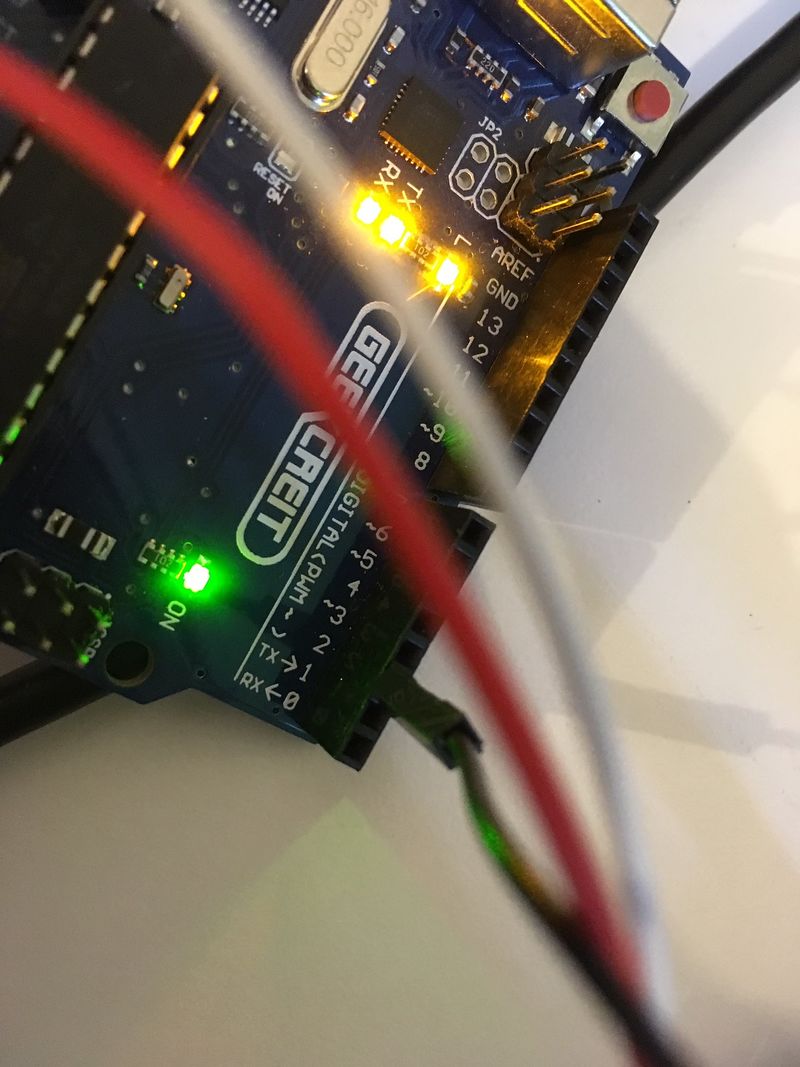
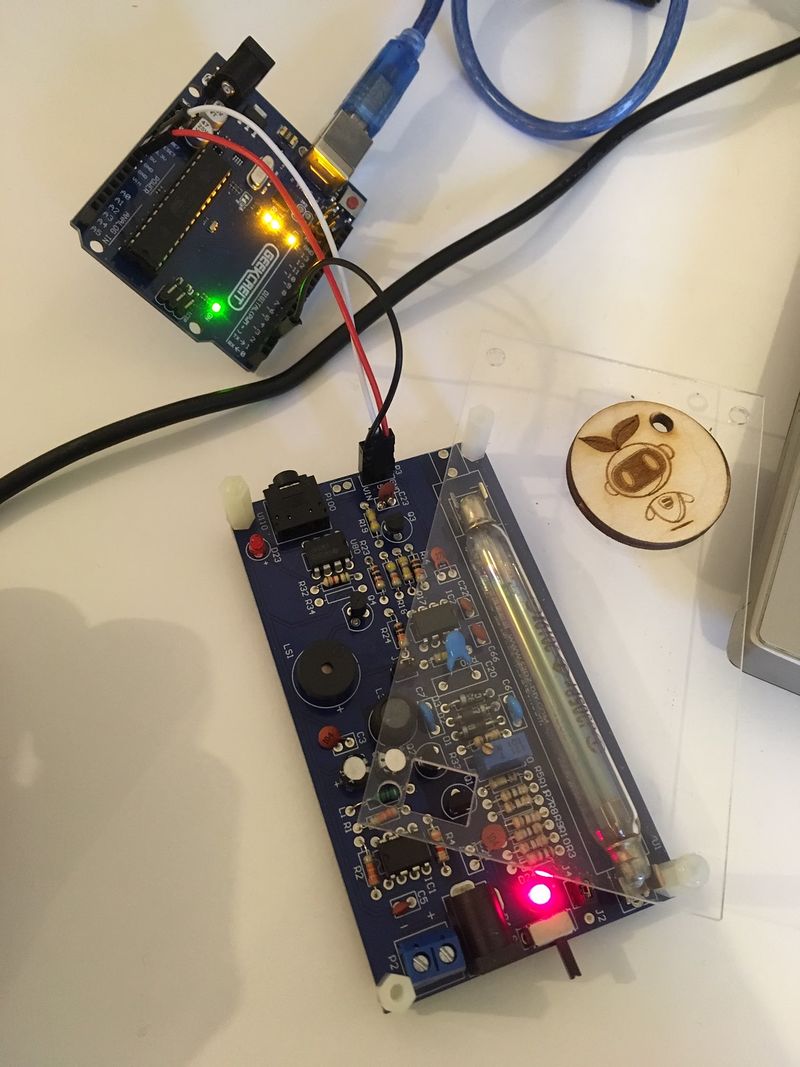
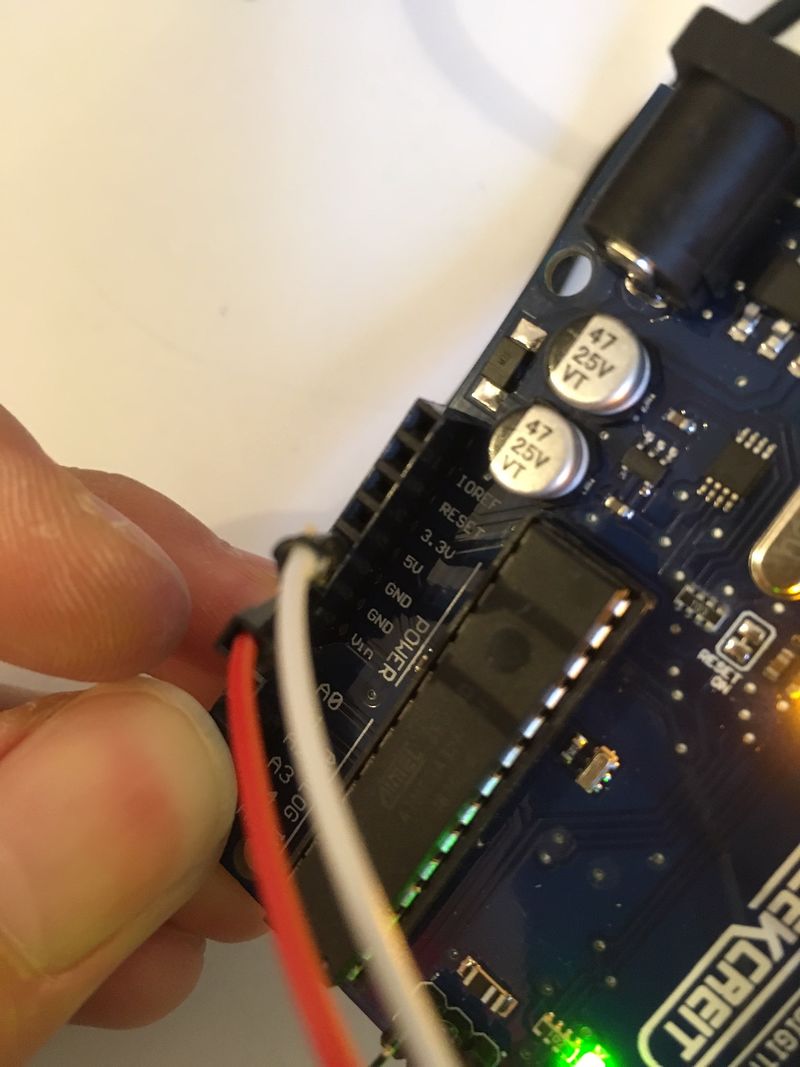
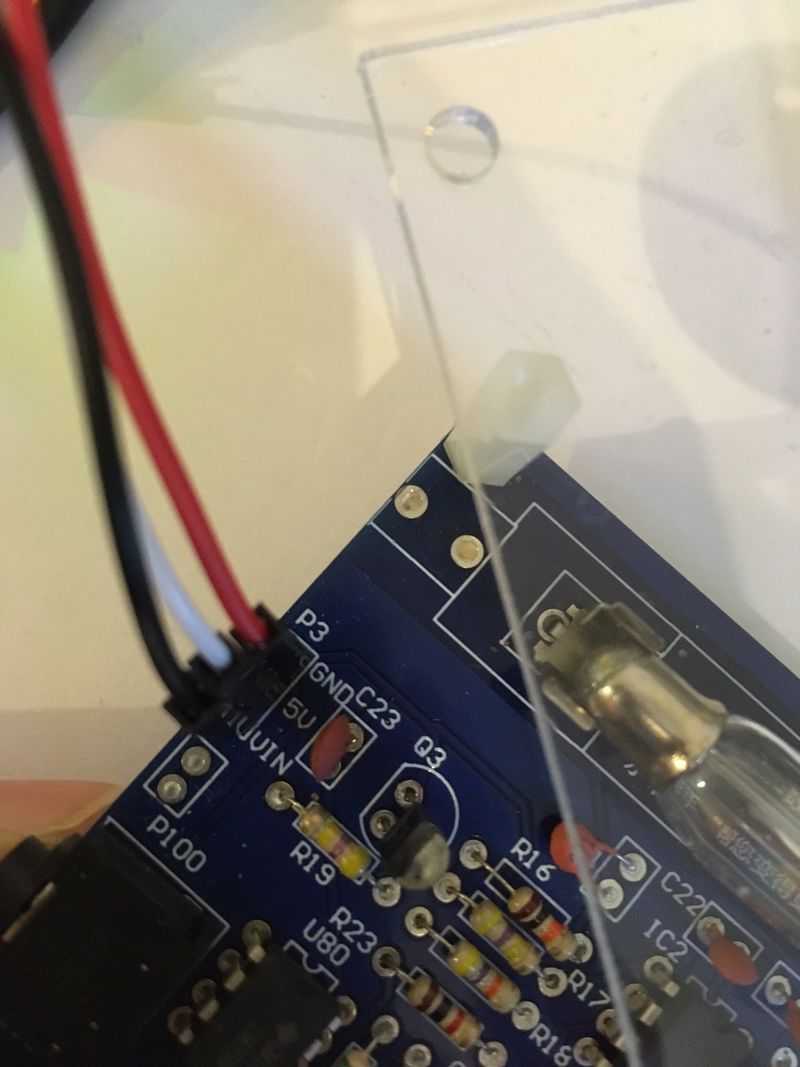
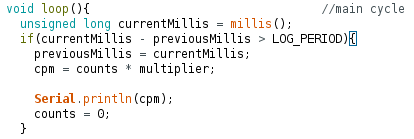
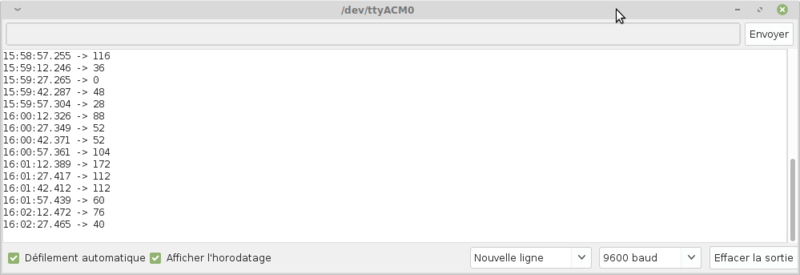
 Français
Français English
English Deutsch
Deutsch Español
Español Italiano
Italiano Português
Português